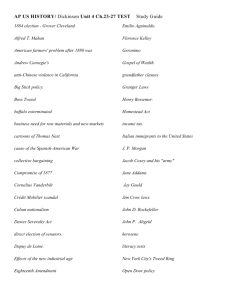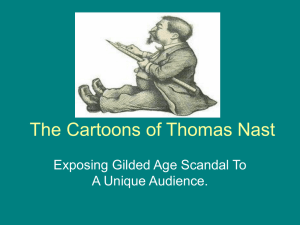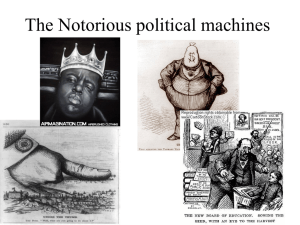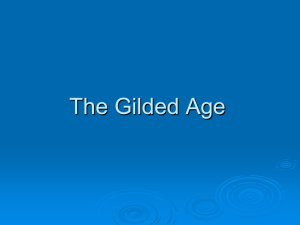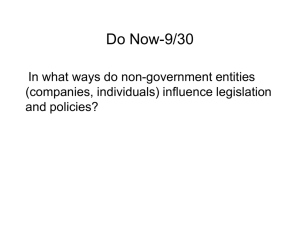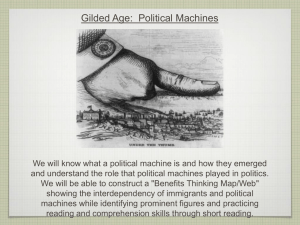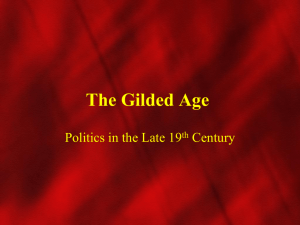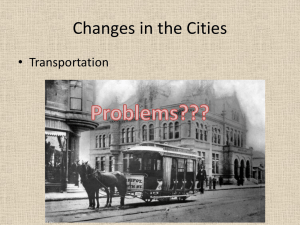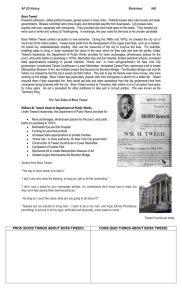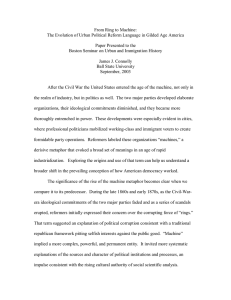Political Machine: What did Boss Tweed Boss?
advertisement
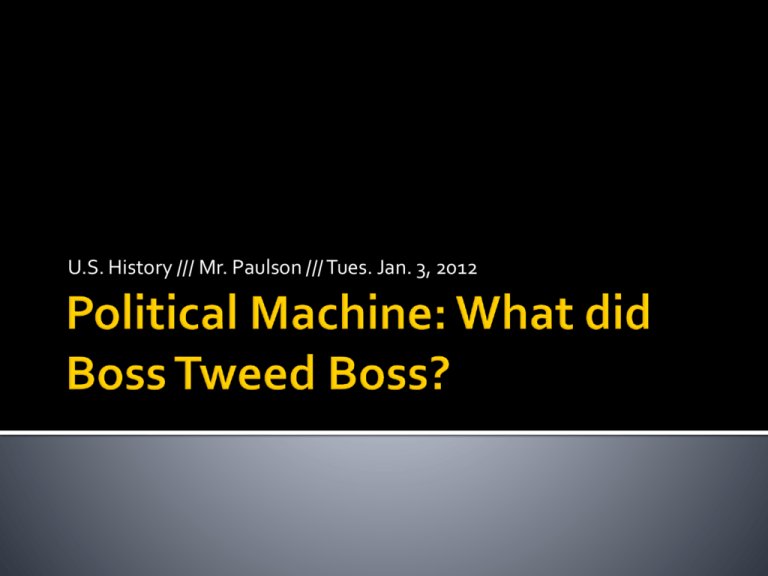
U.S. History /// Mr. Paulson /// Tues. Jan. 3, 2012 1. Explain Carnegie’s quote – “the man who dies rich dies disgraced…” 2. What were some of the problems that came along with industrialization and the Gilded Age? Spark # 10 Business Items God has a sense of humor Concept Attainment Political Machine Finish --- When was the last time you needed a favor from someone? What did you need? Is it always important that a person “pay back” their favors? If you were forced to move –today– what would you take with you?? Now you can only take what can fit in your backpack, what would you take?? Millions of immigrants, from many different cultures arrived in U.S. in late 1800’s and early 1900’s What was life like for immigrants “fresh off the boat?” Where did they come from? Why did they come? Politics in Gilded Age dominated by scandals and corruption Spoils system-bribery, unqualified and dishonest officials Hayes - corrupt and scandals Garfield - corrupt and assassinated political machines dominate city politics monopolies heavily influence national politics Unofficial city “organization” –meant to keep party or group in power Usually boss picked puppet to hold office Exchange of favors---bosses take advantage of poor immigrants (they have nothing!!) Form of welfare Bosses and machine helped immigrants when government and private industry would not Cincinnati’s George B. Cox-rare honest example “Boss Tweed”- Tammany Hall Dem’s in NYC “Under the Thumb” cartoon William Tweed Or “Boss Tweed” Tammany Hall Thomas Nast-German immigrant cartoonist Depicted Tweed as dictator and thief who manipulated government Exposed Tweed to public and helped bring him down What did Boss Tweed boss? “Who stole the people’s money? –Do Tell ‘Twas Him” What do you see? What are the symbols? What do you think is the message of the cartoon? late 1800's - increase in newspaper and magazine circulation = rise and use of political cartoons. Political cartoons - communicate powerful ideas often in a humorous, enlightening manner, by incorporating the events of the period into an easily understandable format most people could relate to even with limited reading abilities. Symbols, caricature, drawings and exaggerations used by the cartoonist point out themes and problems of any given time period. Largely illiterate, non-English speaking population – pictures are key! Progressivism and Imperialism reading guide
